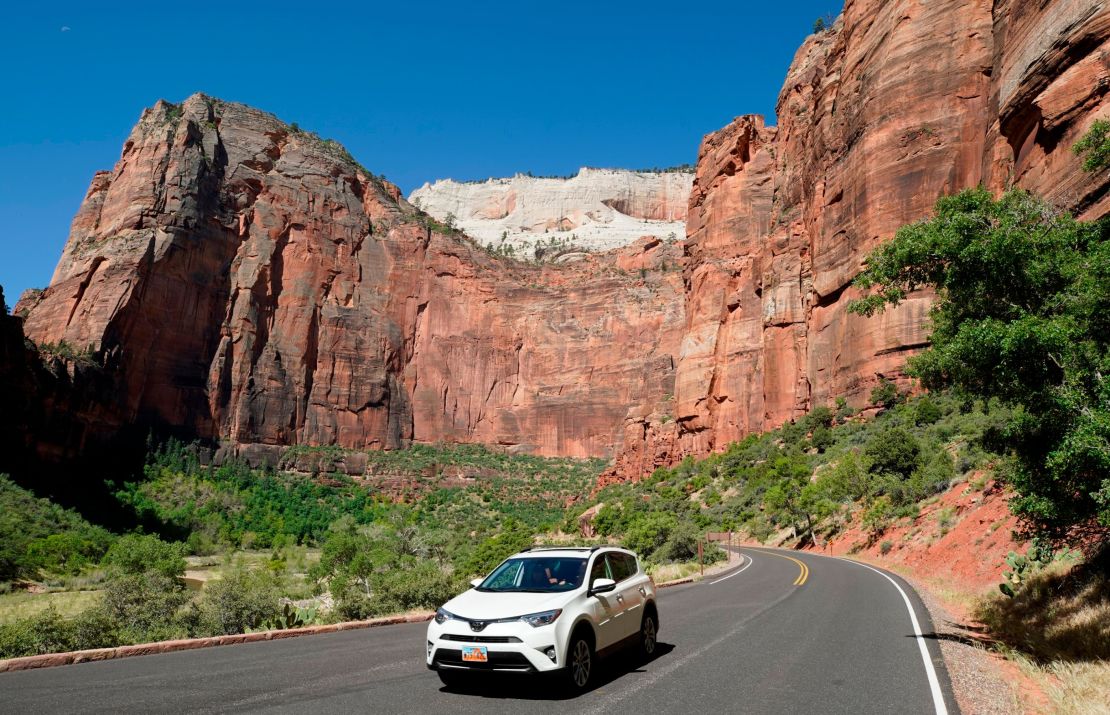People are undoubtedly moving around more as vacation season heats up and patience for sheltering at home wears thin.
Many travelers are sticking closer to home with short driving trips, but air travel is on the rise.
More than 500,000 people crossed through Transportation Security Administration checkpoints at US airports on June 11, the first time numbers have climbed above that mark since the coronavirus pandemic brought travel to a near standstill in March.
Anyone contemplating a trip has probably asked: Is it safer to fly or drive during the pandemic?
As with most things coronavirus, there’s no perfect answer. It depends on the trip, on your behavior and your risk tolerance.
“The risks of travel are usually more dependent on the personal choices of the traveler rather than the means of transport,” said Dr. Daniel Griffin, an infectious disease specialist at Columbia University Medical Center.
Stops to eat, drink, use the bathroom and sleep on long car trips add risk.
Air travel presents its own challenges.
“Although the air in planes is filtered, the mask usage and hygiene of your fellow passengers may be less than ideal,” Griffin said.

The benefits of driving
Dr. William Schaffner, infectious diseases specialist at Vanderbilt University School of Medicine, believes driving has a leg up on safety.
“When you drive, you have much greater control of your own environment and the people around you and so I would think it’s safer to drive in the present time,” Schaffner said.
Even with restroom and fast food drive-thru stops, “you can control your environment regarding the interaction with other people to a much greater extent than you can traveling on an airliner. And of course whatever time you spend on the plane, you’re in a very enclosed environment with other people, all of whom may not be wearing masks,” he said.
But Schaffner also said if he needed to travel across country, as CNN Travel reader James Armstrong did, he would fly because he’s not a fan of long-distance driving and he’d be willing to take the risk.
Fly or drive: A case study
Armstrong, a single dad in San Diego, California, recently wrestled with the fly-or-drive question for a trip to move his daughter’s belongings out of her dorm at West Virginia University.
“Is it safer to take four flights … lasting 7 hours each way with up to 200 other passengers or is it safer to stay in at least three different hotels in three different states, plus all the restaurant/grocery store stops along the way?,” Armstrong wrote.
Ultimately, he and his daughter and two of his younger children flew across country.
Taking two weeks off work for a cross-country road trip wasn’t viable for Armstrong, who is self employed. He also wasn’t convinced that all the interactions it would take to lodge and feed his family on the cross-country trip would be any safer than flying.
“We looked at it, we weighed it, we looked at the time, we looked at the kids’ school obligations … and we just said, ‘We’re gonna bite the bullet. We’ll wear our masks, we’ll bring little swabs to clean things if we need to … And we’ll wait it out for 14 days hoping nothing happens.”
They’ve been back for a little over two weeks now, and they’re all symptom-free, Armstrong said.
The family saw little enforcement of face covering requirements in airports or during their flights. One flight skipped food and beverage service for safety concerns, but the return flight offered that service.
One flight was less full, but passengers were clustered closer to the front, Armstrong said.
Bottom line: Social distancing and mask compliance on planes and in airports is uneven.
Precautions to take, whether you fly or drive
Either way, wearing a mask when you’re close to other people helps reduce risk.
That includes covering your face when you go through a drive-thru on a road trip and keeping your mask on during a flight.
Eating and drinking on a plane presents its own challenges. While Schaffner said the eating and drinking itself is low-risk, it’s trickier when fliers aren’t able to sit six feet from passengers outside their cohort.
“The more you’re around unmasked people, the riskier it gets. So maybe you keep your mask on and forgo the drink. But you don’t want to get dehydrated,” said Schaffner.
Griffin agrees that eating or drinking in flight carries risk.
“When people eat on planes, they tend to touch their masks, uncover their nose and mouth and potentially expose themselves and others,” he said.
Keeping the recommended six feet of social distance whenever possible and limiting interactions with other people is key to mitigating the risks of coronavirus exposure.
Using electronic check-in apps and packing your own food helps reduce face-to-face contact.
Wash or sanitize your hands frequently and sanitize surfaces that others may have touched.
But perhaps most importantly, make sure you’re OK with the level of risk you’re taking.
For the Armstrongs, air travel is worth the risk.
“It’s like riding a roller coaster for the first time. You’re pretty scared, but honestly, after that you’re like, ‘OK,’ ” said James Armstrong.
OK enough for another flight? Yes. Armstrong’s daughter flew cross-country again this week.
Her Southwest flight was overbooked for social distancing and the airline repeatedly called to see if she would change her flight, Armstrong said.
She didn’t. But it’s another sign that there’s no guarantee for social distancing on planes.
“You can’t anticipate exactly what’s going to happen,” said Schaffner. “So it’s very much your own sense of risk tolerance.”

















